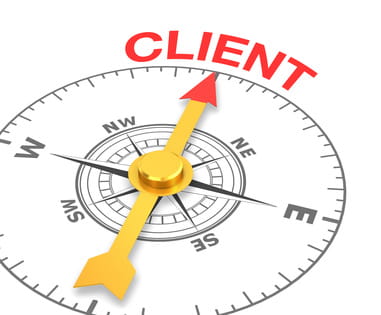How to Build Client Relationships in Business

This article examines the pitfalls of a real-life professional business relationship, and shares the ingredients necessary for building successful client relationships.
What would you do?
A top-tier accounting firm was busy celebrating another year of fee income growth from one of its most important audit clients, a huge telecommunications business. The audit had run smoothly from the accountants’ view, despite some hiccups on delivery times and quality control. However, overall, the advisers were happy with the depth of the relationship they had built and their position to keep the plum business.
So, when the client asked for an internal review of the account service to negotiate a revised audit fee for the following three years, the accounting firm was naturally mystified.
The client started the meeting by stating that they were generally happy with the relationship. However, they asked to remove the lead partner from the engagement team, and wanted to lower the total audit fee by 15%. This equated to a negative impact of $185,000 on the accountants.
So, how did the accounting firm’s negotiating team respond?
They basically had two options available – co-operative discussion or competitive challenging.
As a co-operative partner, they could examine the issues concerned and identify the real issues. In a competitive stance, they would assert their integrity and authority to test the validity of the client’s complaints.
The accounting firm chose poorly. They chose a competitive stance, feeling confident about the work they had performed to date. This resulted in a disagreeable climate in the meeting that quickly degenerated into a dog fight. After an hour and a half of mudslinging, the client stated that they were going to cancel the audit contract. In a further blow, they also said they would be withdrawing tax and consulting projects currently in the pipeline. This was a total value to the accounting firm of around $1.6 million. A costly error for the accountants.
Research Before Negotiations
So, what really occurred here? Why did things get out of hand so quickly?
This hypothetical scenario illustrates what can happen when we assume we know what the other side is thinking, but not explicitly saying.
What the accounting firm didn’t know was that the client was about to undergo a major restructure of its business. It was also going to sell down many of its non-performing assets and acquire a new business in a related industry. The managing director simply desired a new partner on the audit account who had a deeper knowledge of the new industry segment the business was purchasing. The audit fee reduction was to reflect a simpler business structure.
The accountants were guilty of breaking the golden rule of many of the best negotiation skills courses: Make sure you develop trustworthy relationships. They ignored the needs of the other side and neglected to put all the facts on the table.
This negotiation should also never have been the flashpoint that it became. Had they known the truth, but for facts not stated, the meeting would not have gone awry.
If the accountants had been proactively managing the relationship from a process (what’s happening in the relationship) viewpoint, instead of a content (the audit) perspective, the meeting might never have taken place. Alternatively, at minimum, the bias for the meeting would have been undertaken weeks beforehand, with a vastly different outcome.
Build Trusting Client Relationships
The lesson from this example is that professional advisers are involved in negotiating the relationship dynamics with their clients every day, not merely at a contractual renewal or crisis point. By then, it’s often too late. The negotiation is all but over, decisions made and positions locked in.
Effective business relationships must be involved with an ongoing demonstration of trust and predictability. Client and adviser must negotiate these aspects at every interaction.
How frequently have advisory firms celebrated huge tender successes, believing that they have won the relationship and “as long as we deliver the content, we have the client in the bag.“
The stark reality is that the hard work of building resilient, successful client relationships occurs as soon as you win the account and is an ongoing, daily interaction of value exchange.
The mistake that many advisers make is to assume their authority as a subject matter expert permits them to avoid negotiating the traverses of the relationship.
Client relationships are undulating, rarely smooth. Yet unwise advisers only speak to issues and concerns to clients when there is a consequence, such as the threat of the loss of a contract or economic relationship.
If advisers use a consistent and systematic approach to negotiating the client relationship, as a daily behavior, they can build stronger client partnerships which actually sustain harmony, enhance greater understanding, and avoid skirmishes.
When differences inevitably arise, the strong relationship will overcome difficulties and survive due to the negotiated, shared understanding of each other’s needs.
Negotiation Approach
So, how can advisers build a negotiating approach to managing client expectations? Here are the seven golden rules of negotiating resilient relationships:
- Look from above the action. Resist focusing on the content of the relationship; your subject matter experts can handle that. Focus on the process of the interaction, asking, “What is really happening here? What are these clients really saying? What are their real, underlying needs?”
- Negotiate before it’s too late. Research suggests that up to 80% of the results in any formal negotiation is determined before the actual face-to-face meeting. So, use the time leading up to any meeting or planned interaction wisely. Get the facts, safely test the likely positions with client representatives. Work through the optional scenarios of each other’s desired outcomes.
- Find common ground. No matter how awkward relationships become, you can always find some common ground on which to build a solid foundation. Look for common ground areas at every client interaction. The more common ground you can establish, personally and professionally, the more pliant the relationship will be. Keep asking: “What do we both want?”
- Ascertain the real needs of the other side. Expert negotiators distinguish themselves by revealing the true or underlying needs of the other side early in any relationship. This allows a more frank discussion of the issues and, ultimately, a better outcome. Ask open-ended questions to elicit deeper responses from the client. By continually asking questions rather than making statements, you can discover even the most hidden of agendas of disgruntled or even happy clients.
- Be flexible. The accountants in our example had two choices of style to reply to the client’s issues – co-operative or competitive. The problem was they chose their default or emotional reactionary style – to get angry and defensive. However, the skilful professional realizes that a negotiating style is very strong when you can adapt to the situation. Some situations require you to “act” in a contrary style to your personality. For instance, naturally co-operative consultants may have to become more competitive to assert their authority, for better results. So, be aware of your style of negotiating. Also, be prepared to flex your style muscles to suit the climate of the relationship.
- Build your tactics toolkit. Tactics are the currency of negotiations. Everyone, in every daily negotiating interaction, formally or informally, uses a variety of tactics to achieve their goals. Most people, even in business situations, are unaware of the tactics they use. More vitally, they are unconscious to the tactics being used against them. Write down the tactics you intend to use PRIOR to any meeting and note the tactics your other side uses against you. This will build a very powerful, cogent skill in using tactics to achieve better outcomes in the relationship.
- Have a plan. How often do professionals plan and write down their approach to managing interactions with clients? Our evidence suggests rarely. Every negotiation of any timeframe, from three minutes to three years, goes through systematic phases of introduction, differentiation, integration, and settlement. Once you comprehend the timeline of any negotiation, you can become a skilful negotiator in defining the action and asserting your position more positively.
Negotiation is a universal action, in business and in life. It is the bloodstream of relationships. If you become ill and lazy, the blood stops moving and a crisis ensues quickly.
Professional relationship managers know and understand that managing expectations is a daily, ongoing skill and that every interaction with clients is a negotiation, an opportunity to positively influence clients’ perceptions about your value as a trusted adviser.
YOU MAY ALSO LIKE








The article highlights the core of sales and business development. It’s an excellent article to read and tackles very practical issues. Good Work!